Русь, Византия и Западная Европа: Из истории внешнеполитических и культурных связей XII—XIII вв. - [272]
Roman Mstislavich had the immediate contacts with the German rulers who took part in the struggle for power in the Empire, especially with king Philip the Schwab and Hermann, landgrave of Thuringia. St. Peter's monastery in Erfurt, which played noticeable role in the competition between the Stauffens and the Velfs, was also connected with the prince of Galich and Volyn and he donated large sums to the monastery, probably during a personal visit.
The union of the Stauffens with the prince of Galich and Volyn is testified by Alberick de Trois Fontain saying in his Chronic that the last Roman's campaign he perished in was aimed to Saxony (1205). Dwellers of the distant Cistercian monastery could know about Roman's campaign thanks to the wide contacts, good knowledge of the European policy and close links with Saxony and Minor Poland Roman marched through.
One cannot accept the version of war Roman waged against Polish princes Leshko and Conrad suggested by Jan Dlugos who mixed the circumstances of the campaign of 1205 with that of the other times. Nevertheless one cannot deny completely the decision by the prince of Galich and Volyn to invade Poland and capture two Polish cities (reported about in the Russian chronicles) influenced by some special reasons rooted in the Polish-Russian relations of that time.
The information on the Papal embassy to Galich with the offer of the royal crown to Roman Mstislavich in exchange of the Union with Rome written in Russian History by Tatichev at the year of 1204 cannot be denied. The idea of Tatichev's practicing imitating of the chronicle entries proposed by some modern scientists is not confirmed. The main instrument of verification the information on the Papal embassy is still its correspondence to the approved data about eastern policy of the Roman Curia during the pontificate of Innocent III. One cannot doubt the persistent will of the Pope to submit the Orthodox Russian Church after the conquest of Constantinople to the jurisdiction of Rome.
The relations with Byzantium took the most important place in the foreign policy of Roman Mstislavich. According to History by Jan Dlugos and the Gustyn Chronicle the overthrown Bizantine emperor Alexios III after his flight from Constantinople in 1203 spent some time in Galich where he met Roman. The fact is confirmed by the Italian chronicler of the second part of the 13th — the beginning of the 14th c. Bartholomew del Fiadoni (Ptolemy of Lukke). Fiadoni who was born c. 1227, could have associated with the alive participants of the events. Being the librarian at the court of John XXII he was well informed of the foreign policy of the Pope and he was highly interested in the details of the 4th Crusade. Besides that Fiadoni has been the bishop of Torcello (the island and the town in the Venetian Lagoon), which citizens took part together with Venetians in the conquest of Constantinople for many years.
The known story of exile of Alexios III, of his visit to Bulgaria and the negotiations with king Kaloian testify the possibility of the contacts with the prince of Galich and Volyn as well. This is confirmed with the information about military and political union of Alexios and Roman and the traditionally active role of Galich in the approval of the pretenders to the royal thrones of Byzantium and Bulgaria also.
It was Roman Mstislavich who became the main military ally of the Byzantine Empire in the beginning of the 13th c. The Romayan State was going through the sever political crisis aroused by Serbian and Bulgarian uprising and the crushing attacks by Polovtsy. According to Niceta Choniate it was possible to stop the nomad aggression thanks to the Galich aid only. The circumstances and the time of Roman's campaign in the story by Choniate are just the same as in the Russian chronicles which report the steppe campaigns of the Galich and Volyn prince.
The outstanding role of Roman Mstislavich in the struggle with the enemies of the Empire is reported in the other Byzantine sources besides Choniate, which are practically unknown to the modern Russian historians. These are the tale of Theodor Skytariote and the poem by Ephrem Ennius. Both authors repeat Choniate mainly, but they add some new details.
All the Byzantine sources give the title of «hegemon Galiciae». The term «hegemon» unlike the other Byzantine titles of the Russian princes meant «the ally and the relative (or in-law) of the Emperor». The result of the union of Alexios and Roman was also the stabilization of the relations with the Russian population in the Lower Dnieper and the Lower Dniestr («the branch of the Tauro-scythes» of «Bordona», as it called in the Byzantine sources).
Diminishing of the role played by the prince of Galich and Volyn Roman Mstislavich in the political life of South Rus' and his uniting the Russian princes for the campaigns against the Polovtsy is typical for the North-Eastern Chronicle tradition first of all because of the political views of chronicler Simon, who arrived from Kiev to Vladimir Suzdalsky in the beginning of the 13th c. and afterwards became the bishop. Tightly connected to the family of the Kievan prince Rurik Rostislavich, the main enemy of Roman in his struggle for Kiev, Simon having arrived to Vladimir became serving the interests of king Vsevolod the Big Nestle who perceived Roman as a dangerous competitor in the influencing the South Russian lands.
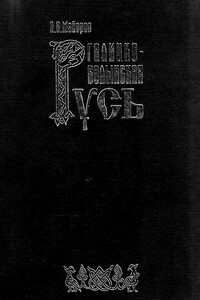
В монографии на основе широкого круга русских и иностранных источников рассматривается социально-политическая история Галицко-Волынской Руси XI–XIII вв. Изучаются процессы формирования городских общин Галичины и Волыни, их борьба за независимость от Киева, особенности политического развития, межобщинные противоречия и конфликты. Значительное внимание уделяется социально-политической роли бояр, раскрывающейся во взаимоотношениях с княжеской властью и рядовыми гражданами, формированию и деятельности боярской думы, ее месту в системе государственных институтов.
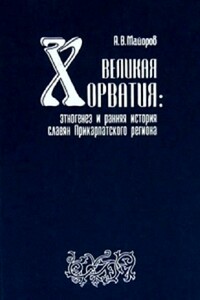
В монографии проводится комплексный анализ известий византийского императора Константина VII Багрянородного и других письменных источников о происхождении и расселении хорватских племен, этнической истории славянского населения Прикарпатского региона. С учетом новейших археологических и лингвистических данных решаются вопросы происхождения этнонима «хорваты», исторических условий славянизации его первоначальных носителей, хорватской прародины. Устанавливается географическое положение Великой Хорватии, территориальная локализация белых хорватов, пути хорватской миграции в раннем средневековье.
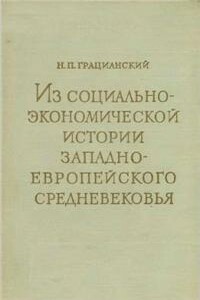
Грацианский Николай Павлович. О разделах земель у бургундов и у вестготов // Средние века. Выпуск 1. М.; Л., 1942. стр. 7—19.
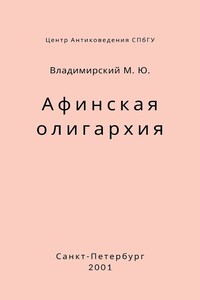
Монография составлена на основании диссертации на соискание ученой степени кандидата исторических наук, защищенной на историческом факультете Санкт-Петербургского Университета в 1997 г.
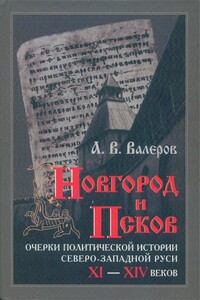
В монографии освещаются ключевые моменты социально-политического развития Пскова XI–XIV вв. в контексте его взаимоотношений с Новгородской республикой. В первой части исследования автор рассматривает историю псковского летописания и реконструирует начальный псковский свод 50-х годов XIV в., в во второй и третьей частях на основании изученной источниковой базы анализирует социально-политические процессы в средневековом Пскове. По многим спорным и малоизученным вопросам Северо-Западной Руси предложена оригинальная трактовка фактов и событий.
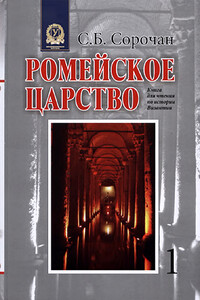
Книга для чтения стройно, в меру детально, увлекательно освещает историю возникновения, развития, расцвета и падения Ромейского царства — Византийской империи, историю византийской Церкви, культуры и искусства, экономику, повседневную жизнь и менталитет византийцев. Разделы первых двух частей книги сопровождаются заданиями для самостоятельной работы, самообучения и подборкой письменных источников, позволяющих читателям изучать факты и развивать навыки самостоятельного критического осмысления прочитанного.
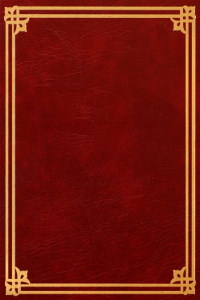
"Предлагаемый вниманию читателей очерк имеет целью представить в связной форме свод важнейших данных по истории Крыма в последовательности событий от того далекого начала, с какого идут исторические свидетельства о жизни этой части нашего великого отечества. Свет истории озарил этот край на целое тысячелетие раньше, чем забрезжили его первые лучи для древнейших центров нашей государственности. Связь Крыма с античным миром и великой эллинской культурой составляет особенную прелесть истории этой земли и своим последствием имеет нахождение в его почве неисчерпаемых археологических богатств, разработка которых является важной задачей русской науки.
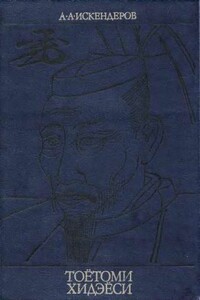
Автор монографии — член-корреспондент АН СССР, заслуженный деятель науки РСФСР. В книге рассказывается о главных событиях и фактах японской истории второй половины XVI века, имевших значение переломных для этой страны. Автор прослеживает основные этапы жизни и деятельности правителя и выдающегося полководца средневековой Японии Тоётоми Хидэёси, анализирует сложный и противоречивый характер этой незаурядной личности, его взаимоотношения с окружающими, причины его побед и поражений. Книга повествует о феодальных войнах и народных движениях, рисует политические портреты крупнейших исторических личностей той эпохи, описывает нравы и обычаи японцев того времени.